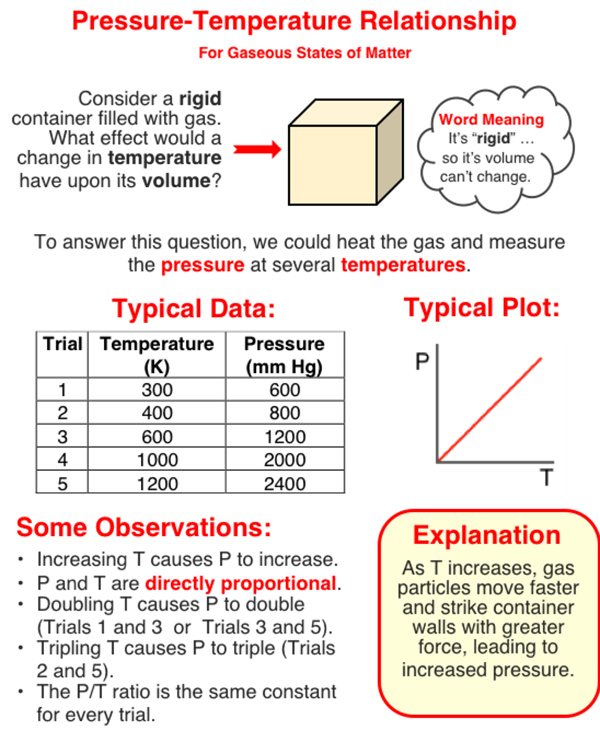The pressure of a sample of gas is dependent upon the Kelvin temperature of the gas. Increasing the Kelvin temperature increases the pressure. The two quantities are directly proportional to one another. The ratio of Pressure/Temperature remains constant. As such, a doubling of the Kelvin temperature will double the pressure of the gas.
Pressure and Temperature - Questions 7 Help
There are two questions in this Question Group. Each question is very similar to one another. The question below is one of the questions.
Version 1:Observe the data table shown at the right for a sample of gas that has a constant volume and number of particles. Use the data table predict the pressure of the gas when it's temperature is 1000 K.
Pressure at 1000 K: ___________
